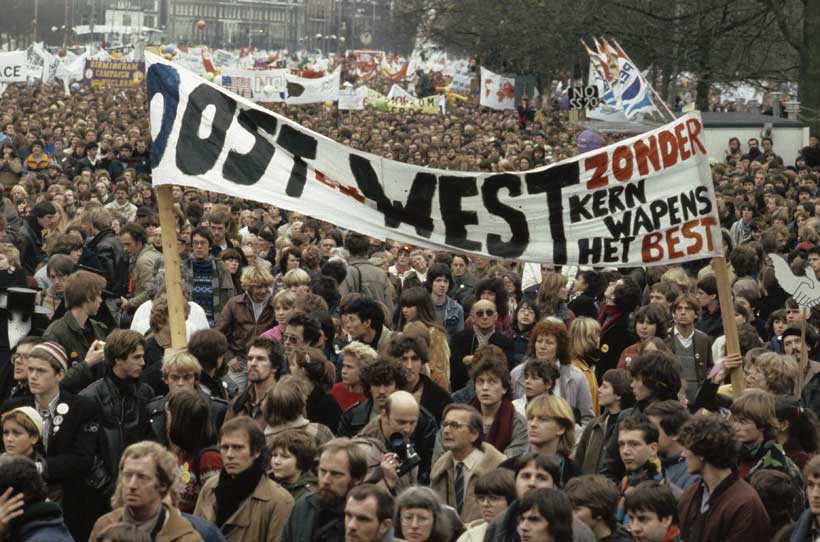Post-war Europe saw rising tensions between the United States and the Soviet Union, culminating in various forms of rivalry, from economics and security to politics. These two giants constantly tried to outdo each other. One notable example is the formation of the North Atlantic Treaty Organization (NATO) by the U.S. and its allies. NATO was formed in 1949 with the main objective of providing security assurance and fostering cooperation among its members (NATO, 2024). The Warsaw Pact, formulated six years later and led by the Soviets, aimed to contain NATO’s influence over Europe, comprising Eastern European countries such as East Germany, Poland, Czechoslovakia, Romania, Albania, Hungary, and Bulgaria.
The integration of West Germany into NATO in 1955 was seen as a potential security threat to Eastern Europe and the Soviet Union. The Warsaw Pact also served to consolidate Soviet dominance over Eastern Europe. Following World War II, the Soviet Union gained significant influence in these countries, and the Pact solidified this by establishing a military alliance under Soviet leadership. Initially, it was considered the Soviet Union’s instrument of power, with its members having no influence in the decision-making process. However, by the 1960s, the Warsaw Pact had evolved into a multilateral alliance similar to the Western-led NATO, though the Soviet Union still held major influence (Crump, 2015).
The Warsaw Pact played an important role in Soviet Cold War strategies. Armed forces within the Warsaw Pact were often used by the Soviet Union to further its agenda, highlighting the dominant power dynamics of the Pact, where Soviet military and political influence was significant. The internal dynamics within the Pact were characterized by varying levels of compliance among member states. Poland and Romania sometimes opposed Soviet directives, but their dissent was typically met with coercive measures to ensure compliance.
The Soviet Union maintained strict control over the Warsaw Pact, using it to suppress dissent and maintain its hegemony. A notable example is the use of military force to crush an uprising in Czechoslovakia in 1968. When Czechoslovakia attempted to implement liberal reforms under leader Alexander Dubček, the Soviet Union viewed these changes as a threat to its control over Eastern Europe. In response, on the night of August 20-21, 1968, the Soviet Union, along with other Warsaw Pact members (except Romania), invaded Czechoslovakia with over 200,000 troops and 2,000 tanks. This invasion effectively crushed the reform movement and reinforced the Soviet Union’s determination to maintain strict control over its satellite states. The event demonstrated the extent of the Soviet Union’s influence and the lengths it would go to preserve its sphere of influence, thereby exacerbating tensions between the Eastern and Western blocs during the Cold War (Williams et al., 2012).
The Soviet Union’s influence in the Warsaw Pact continued throughout the Cold War era. However, in the later stages of the Cold War, the Soviet Union experienced a significant decline due to economic hardships. This led to the introduction of several policies, such as Glasnost and Perestroika, which in English translate to openness and restructuring. Glasnost aimed to enhance transparency and promote freedom of speech by loosening state censorship of the media. Perestroika was a broader policy aimed at transforming the Soviet economy and political system. It included implementing market-oriented measures, such as relaxing price regulations, promoting entrepreneurial activities, and authorizing restricted private enterprises (Mason, 1988).
These policies were intended to reform the Soviet Union and regain its influence in the region. However, they led to the demise of the Soviet Union, triggered by a wave of revolutions in Eastern European countries favoring more liberalization. The revolutions in Eastern European countries in 1989, encouraged by the West, led to the fall of communist systems. By the end of the 1980s, the Soviet Union had lost its hegemonic influence within the Warsaw Pact, eventually dissolving in 1991 alongside the fall of the Soviet Union and the independence of many Eastern European countries that subsequently aligned with the West (Sarotte, 2014).
The Warsaw Pact exemplifies international regime theory as a power-based approach. The power-based approach is one of the three main approaches in international regimes theory. The core essence of the power-based approach to an international regime is the role of hegemony within the regime. Several key arguments of the power-based approach are that regimes are established and maintained by actors with more power resources, and regimes experience a decline in strength or effectiveness as power becomes more evenly distributed among their members (Hasenclever et al., 2000). In the case of the Warsaw Pact, the regime was sustained by dominant powers and functioned under Soviet hegemony. The stability and coherence of the Pact were directly tied to Soviet power. When the Soviet Union was strong, it could enforce compliance and maintain the regime. However, as the Soviet Union weakened, the regime’s foundations crumbled. The collapse of the Warsaw Pact illustrates how the decline of a hegemonic power leads to the disintegration of an international regime. The Soviet Union’s inability to maintain its dominance resulted in the regime’s collapse, highlighting the centrality of power dynamics in international relations.
The existence of the Warsaw Pact was determined by the influence of the Soviet Union, from its establishment to its demise. The history of this subject provides valuable insights into the characteristics of international alliances and the importance of hegemonic power. Analyzing the Warsaw Pact using international regime theory offers insights into present-day geopolitical alliances and power structures. In a period of global shifts and changes in power dynamics, the historical significance of the Warsaw Pact serves as a reminder of how influential powers can either uphold or undermine international systems.
